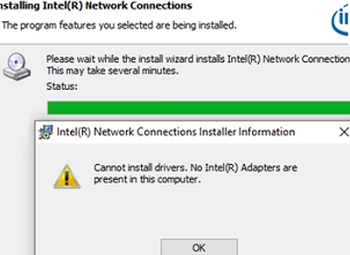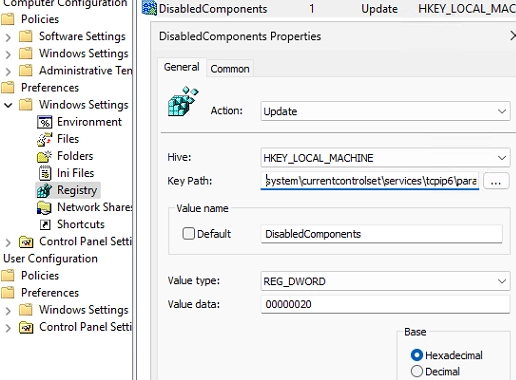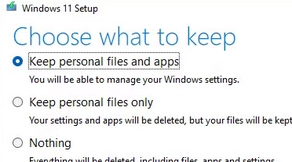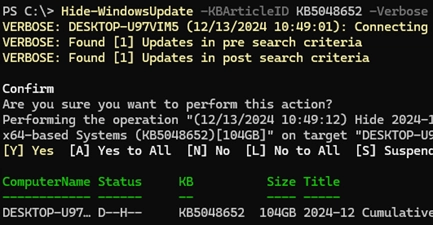Category: Windows Server 2022
-

Troubleshooting Steps for Installing Network Adapter Drivers on Windows Server
When attempting to install Intel network drivers on Windows Server, users often encounter a common issue: the installer fails to recognize the Intel network adapter devices, leaving them appearing as unknown in Device Manager. The error message states that no Intel adapters are present, preventing any driver installation. This issue typically arises when Windows Server…
-

A Step-by-Step Guide to Prioritizing IPv4 over IPv6 in Windows Networks
By default, Windows attempts to connect to remote hosts using IPv6 if both IPv4 and IPv6 addresses are available. This occurs when the DNS server or mDNS method returns both ‘AAAA’ (for IPv6) and ‘A’ (for IPv4) records. Such behavior may become problematic for network services or older applications that don’t support IPv6 or don’t…
-

How to Fix the “The Referenced Assembly Could Not Be Found” Error (0x80073701) on Windows
When working with Windows Server or Windows 10/11, you may encounter the error: The referenced assembly could not be found. Error: 0x80073701. This issue typically arises when adding or removing features or roles. A similar error may also appear when trying to enable optional features via PowerShell, such as the Windows Subsystem for Linux (WSL):…
-

How to Exclude a Specific User or Computer from Group Policy in Windows
To exclude specific users or computers from Group Policy Object (GPO) settings in Active Directory, there are several effective methods you can employ: GPO Security Filtering: This is the simplest method, allowing you to control which Active Directory objects can apply the policy. WMI Filters: You can limit the scope of the GPO using Windows…
-

A Comprehensive Guide to Writing Logs to the Windows Event Viewer Using PowerShell and CMD
To log event information directly to the Windows Event Viewer using PowerShell or Command Prompt, you can utilize the Write-EventLog cmdlet. This approach is beneficial for tracking script execution without creating text log files. Here’s how you can do it: Log an Information Event:Use the following command to write an informational entry to the Application…
-

How to Hide or Block a Specific Windows Update: A Step-by-Step Guide
Sometimes, after installing a Windows update, users may face issues such as the operating system, specific programs, or drivers malfunctioning. In such cases, it is necessary to uninstall the troublesome update and prevent its reinstallation. This guide outlines how to temporarily pause updates and block unwanted updates from the Windows Update service. Using the Microsoft…
-

Configuring Windows Firewall Logging: A Step-by-Step Guide and Log Analysis Techniques
If you suspect that the built-in Windows Defender Firewall is obstructing network connections from a specific program or service, it’s unwise to disable it entirely. Instead, you can log all network traffic passing through the firewall to identify filtered or dropped packets, as well as find relevant ports and source/destination IP addresses. This will allow…
-

A Comprehensive Guide to Collecting Windows and Active Directory Event Logs Using Graylog
In a previous post, we discussed deploying a centralized log collection and management service using the Graylog stack (Graylog + OpenSearch + MongoDB). This article will guide you on sending Event Viewer logs from Windows hosts, including Active Directory domain controller events, to Graylog. Configuring Graylog Data Collector for Windows Devices To start, navigate to…
-

Sending WhatsApp Messages from the Command Line: A Step-by-Step Guide
You can utilize the Mudslide console client to send WhatsApp messages directly from the command line or within scripts, which is especially convenient for system administrators who wish to dispatch notifications through automation processes. Mudslide is built on the Baileys library, an unofficial open-source solution enabling interaction with the WhatsApp Web API via WebSockets, and…
-

Mastering Network Monitor: A Comprehensive Guide to Capturing and Analyzing Network Traffic on Windows
Microsoft Network Monitor (NetMon) is a vital tool for capturing and analyzing network traffic on Windows systems. While it hasn’t seen updates in several years, many administrators still rely on it for diagnosing network connections. Although it may not match the complexity of tools like Wireshark, NetMon stands out for its simplicity and lightweight nature,…